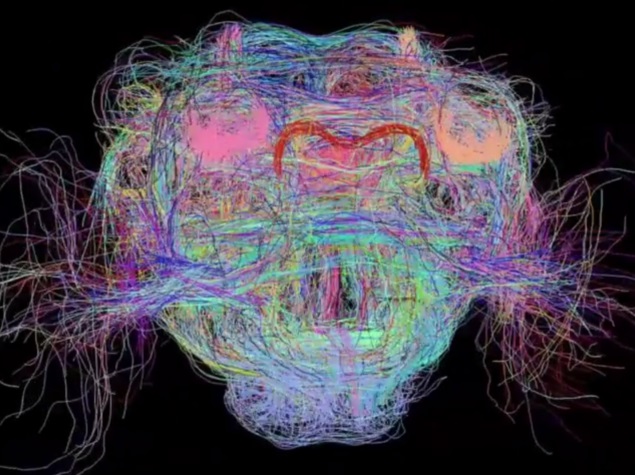- Home
- Science
- Science News
- Virtual Finger to Navigate 3D Images
Virtual Finger to Navigate 3D Images

The new technology, called "Virtual Finger", allows scientists to move through digital images of small structures like neurons and synapses using the flat surface of their computer screens.
"Using Virtual Finger could make data collection and analysis ten to 100 times faster, depending on the experiment," explained Hanchuan Peng, associate investigator at the Allen Institute for Brain Science in the US.
Most other image analysis software work by dividing a three-dimensional image into a series of thin slices, each of which can be viewed like a flat image on a computer screen.
To study three-dimensional structures, scientists sift through the slices one at a time: a technique that is increasingly challenging with the advent of big data.
In sharp contrast, Virtual Finger allows scientists to digitally reach into three-dimensional images of small objects like single cells to access the information they need much more quickly and intuitively.
"When you move your cursor along the flat screen of your computer, our software recognises whether you are pointing to an object that is near, far, or somewhere in between, and allows you to analyse it in depth without having to sift through many two-dimensional images to reach it," Peng added.
The software and its applications were profiled in the journal Nature Communications.
Catch the latest from the Consumer Electronics Show on Gadgets 360, at our CES 2026 hub.
Related Stories
- Samsung Galaxy Unpacked 2025
- ChatGPT
- Redmi Note 14 Pro+
- iPhone 16
- Apple Vision Pro
- Oneplus 12
- OnePlus Nord CE 3 Lite 5G
- iPhone 13
- Xiaomi 14 Pro
- Oppo Find N3
- Tecno Spark Go (2023)
- Realme V30
- Best Phones Under 25000
- Samsung Galaxy S24 Series
- Cryptocurrency
- iQoo 12
- Samsung Galaxy S24 Ultra
- Giottus
- Samsung Galaxy Z Flip 5
- Apple 'Scary Fast'
- Housefull 5
- GoPro Hero 12 Black Review
- Invincible Season 2
- JioGlass
- HD Ready TV
- Laptop Under 50000
- Smartwatch Under 10000
- Latest Mobile Phones
- Compare Phones
- OPPO A6 Pro 5G
- OPPO A6s
- OPPO Reno 15 Pro Max
- Honor Win RT
- Honor Win
- Xiaomi 17 Ultra Leica Edition
- Xiaomi 17 Ultra
- Huawei Nova 15
- Asus ProArt P16
- MacBook Pro 14-inch (M5, 2025)
- OPPO Pad Air 5
- Huawei MatePad 11.5 (2026)
- Xiaomi Watch 5
- Huawei Watch 10th Anniversary Edition
- Acerpure Nitro Z Series 100-inch QLED TV
- Samsung 43 Inch LED Ultra HD (4K) Smart TV (UA43UE81AFULXL)
- Asus ROG Ally
- Nintendo Switch Lite
- Haier 1.6 Ton 5 Star Inverter Split AC (HSU19G-MZAID5BN-INV)
- Haier 1.6 Ton 5 Star Inverter Split AC (HSU19G-MZAIM5BN-INV)

















